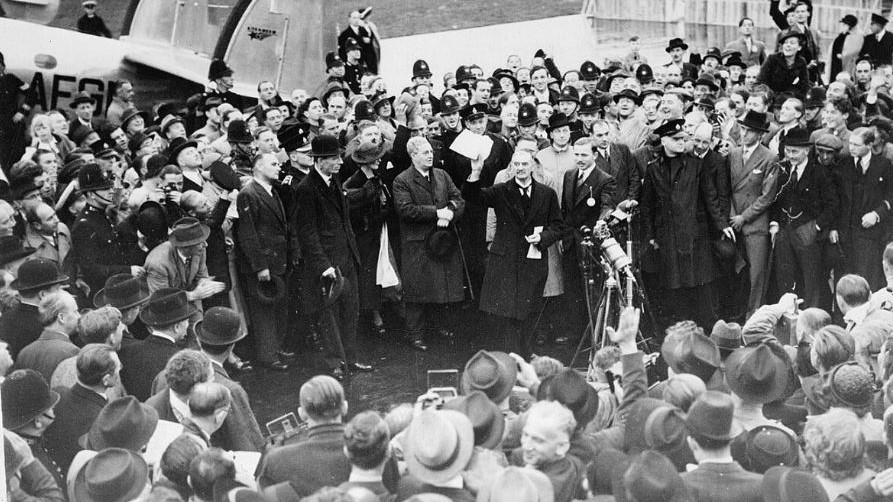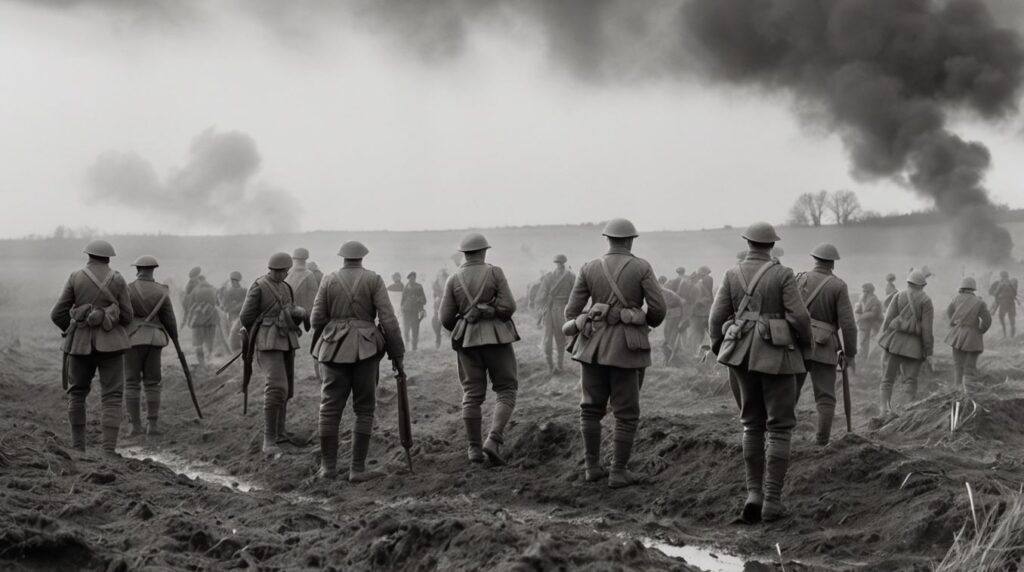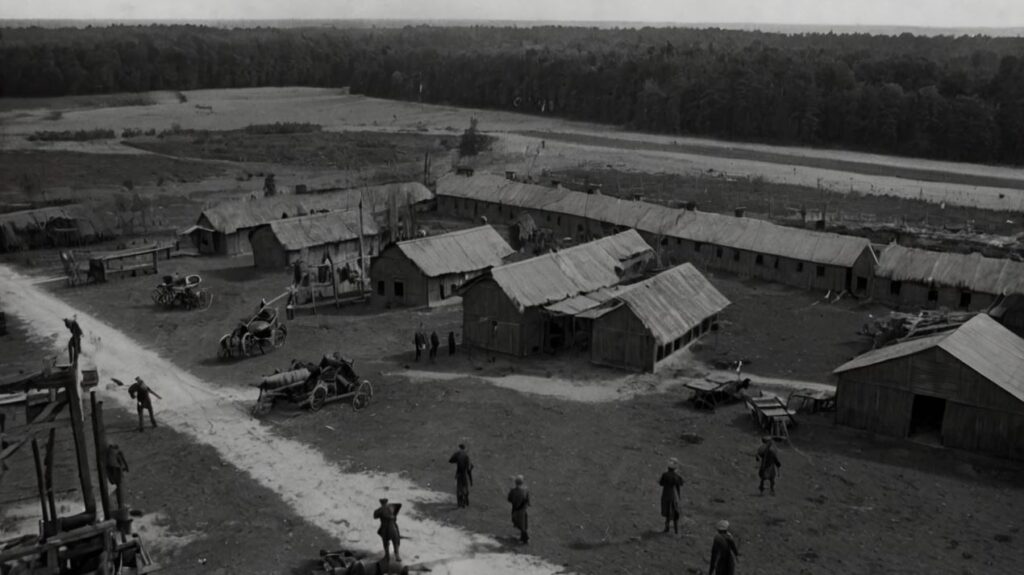The Battle of Gettysburg in 1863 represented the turning point of the Civil War. Confederate General Robert E. Lee invaded the North but was defeated by Union forces. But what if General Lee Have won the Battle of Gettysburg?
Could different decisions have led General Lee to victory? Or were larger factors at play that made Confederate defeat inevitable? This analysis provides perspective on Gettysburg’s pivotal impact on the war’s outcome.
This article examines General Lee’s flawed strategy and how the south could have won the Battle of Gettysburg.
- 1. Better Use of Terrain: Seizing the Heights of Cemetery Hill
- 2. Timely Arrival of General J.E.B. Stuart's Cavalry
- 3. Successful Flanking Maneuvers
- 4. Pickett's Charge: The Costly Gamble
- 5. Union Leadership Errors
- 6. Stronger Intelligence
- 7. Lack of Union Reinforcements
- 8. Better Logistical Support: The Lifeline for Confederate Victory
- A Potential Alternative Timeline for a Confederate Victory
- Implications of a Southern Victory at Gettysburg
- Further Reading
1. Better Use of Terrain: Seizing the Heights of Cemetery Hill
On the morning of July 1, 1863, as the Battle of Gettysburg commenced, a pivotal opportunity lay before the Confederate forces. The undulating terrain of Gettysburg, with its rolling hills and picturesque landscapes, held the key to an altered destiny.

What if, on that very first day, the South had capitalized on this terrain advantage and captured Cemetery Hill?
Cemetery Hill, located to the south of Gettysburg, was a formidable high ground that the Union forces had occupied. Its elevated position afforded a clear view of the surrounding area and a significant tactical advantage.
Had the Confederate forces managed to seize Cemetery Hill on Day 1, the battle might have tilted in their favor. Controlling this strategic high ground would have offered several advantages:
- Artillery Dominance: From Cemetery Hill, Confederate artillery could have rained down devastating fire upon the Union positions. The elevated vantage point would have allowed for better accuracy and a longer reach. This could have potentially disrupted Union lines and causing chaos.
- Defensive Advantage: Cemetery Hill’s natural contours provided excellent defensive positions for infantry. Confederate forces could have entrenched themselves, making it exceedingly difficult for the Union to dislodge them.
- Strategic Maneuvering: Control of Cemetery Hill would have offered the Confederates a springboard for further strategic maneuvering. This would allowed them to dictate the flow of the battle and exploit weaknesses in the Union lines.Top of Form
2. Timely Arrival of General J.E.B. Stuart’s Cavalry
General Stuart’s cavalry had earned a reputation as a formidable and agile force. It was capable of executing reconnaissance, screening, and disrupting enemy lines with remarkable finesse.
In the lead-up to Gettysburg, General Stuart’s absence from the Confederate army had left a significant void in terms of intelligence and coordination.
What if, on those fateful days in July 1863, his cavalry had arrived on time? It could have influenced the outcome of the battle.
For example, General Stuart’s timely arrival could have had the following benefits:
- Enhanced Reconnaissance: General Stuart’s cavalry was known for its superior reconnaissance capabilities. Had they been present from the outset, Confederate forces would have gained valuable, real-time intelligence on Union troop movements and positions. This knowledge could have informed General Lee’s decisions and strategy more effectively.
- Screening and Disruption: General Stuart’s cavalry was skilled at screening Confederate movements and disrupting Union supply lines. Their presence might have hindered Union reinforcements and supplies, thereby, weakening the Union’s overall position.
- Diversionary Tactics: General Stuart was also adept at executing diversionary tactics. This would have diverted Union attention and resources away from the main Confederate force. Such tactics could have relieved pressure on Confederate infantry and artillery units.
The timely arrival of Stuart’s cavalry could have provided General Lee with critical intelligence. It would have also bolstered coordination among Confederate units, and disrupted the Union’s operations.
3. Successful Flanking Maneuvers
Day 2 of the Battle of Gettysburg was marked by General Robert E. Lee’s ambitious flanking maneuvers—a strategy that, if executed more successfully, could have reshaped the battle’s outcome.

Imagine a scenario where General Lee’s maneuvers at key locations like Little Round Top and Culp’s Hill had yielded greater success. This could have weakened the Union’s defensive line.
Little Round Top
What if the Confederates had taken Little Round Top? This rocky position on the Union left flank was a critical position, offering a commanding view of the battlefield.
If Confederate forces had successfully taken Little Round Top, it would have disrupted the Union’s defensive line and allowed Confederate artillery to dominate the battlefield.
This change could have forced Union troops to fall back. A successful Confederate takeover of Little Round Top could have jeopardized the entire Union left flank. Potentially leading to a collapse in their lines.
Culp’s Hill
What if the Confederates had breached Culp’s Hill? Culp’s Hill was a prominent position on the Union right flank, and it was heavily fortified.
Taking Culp’s Hill could have hindered Union reinforcements and support. Without this vital position, Union troops might have been isolated and less able to respond to threats elsewhere on the battlefield.
Impact on the Battle
A successful flanking maneuver at either or both of these locations could have created a ripple effect on the Battle of Gettysburg.
Weakened Union defensive lines, the disruption of their artillery positions, and potentially isolated Union units could have shifted the balance of power in favor of the Confederates.
4. Pickett’s Charge: The Costly Gamble
The Battle of Gettysburg reaches its climactic moment on the third day, with General Robert E. Lee making a fateful decision – the ill-fated Pickett’s Charge.

What if that decision had been more cautious and well-coordinated? How might it have altered the outcome of the battle?
The Historical Pickett’s Charge
On July 3, 1863, General Lee ordered a massive frontal assault known as Pickett’s Charge.
Approximately 12,000 Confederate soldiers, led by General George Pickett, advanced across open ground toward the center of the Union lines on Cemetery Ridge. The charge resulted in devastating casualties for the Confederates and ended in failure.
The Hypothetical Pickett’s Charge
Now, let’s imagine a different scenario. What if General Lee had chosen a more limited and well-coordinated assault instead of a full-scale charge?
- Careful Artillery Preparation: Instead of a rushed charge, General Lee could have initiated a more prolonged artillery bombardment to soften Union positions and create gaps in their defenses. This would have reduced the risk to Confederate troops.
- Precise Timing and Coordination: A more cautious approach would have involved better coordination among Confederate units. This would have ensured that all divisions moved forward in unison. This could have minimized confusion and missteps during the advance.
- Use of Cover and Terrain: Confederate troops might have utilized available cover and terrain to advance under some degree of protection, reducing their exposure to Union fire.
A more limited and well-coordinated approach could have resulted in a less costly assault. While success in this hypothetical scenario might not have guaranteed a Confederate victory at Gettysburg, it could have weakened the Union’s hold on Cemetery Ridge, opening possibilities for subsequent maneuvers and potentially altering the battle’s outcome.
5. Union Leadership Errors
What if General George G. Meade, the commander of the Union Army, had made significant errors in judgment? Could these have created openings for the Confederates to exploit.
Delayed Reinforcements: Imagine that General Meade, in a critical moment during the battle, had delayed the arrival of Union reinforcements to the front lines.
A delay in reinforcements could have left certain areas of the Union defensive line vulnerable. The Confederates might have capitalized on these gaps to push through and create a breach in the Union lines.
Misallocation of Resources: Suppose General Meade, in a strategic oversight, had misallocated crucial resources, such as artillery or reserves, to less critical areas of the battlefield.
Misallocation of resources could have weakened key Union positions and allowed the Confederates to exploit these vulnerabilities. A shortage of artillery support or reserves could have been disastrous for the Union’s defensive capabilities.
Failure to Capitalize on Confederate Mistakes: What if General Meade had failed to recognize and exploit Confederate mistakes?
Failure to seize opportunities could have allowed the Confederates to regroup and rectify their errors, potentially salvaging their attack and maintaining pressure on the Union lines.
Disarray in the Chain of Command: Imagine a scenario where there was disarray or miscommunication in the Union chain of command, resulting in confusion among Union officers. This would have presented opportunities for the Confederates to exploit gaps in the Union lines.
6. Stronger Intelligence

At the heart of a battle, where decisions are made in split seconds and the fate of nations hangs in the balance, intelligence is often the beacon that guides commanders through the darkness.
What if, at the Battle of Gettysburg, General Robert E. Lee’s Confederates had possessed stronger intelligence, accurate information regarding Union positions and strength?
Had Confederate scouts, spies, or reconnaissance units successfully gathered precise and up-to-date information on the Union army’s dispositions, strengths, and weaknesses, then General Lee could have made more informed and effective decisions throughout the battle.
With superior intelligence, General Lee could have had a clearer picture of the Union’s defensive positions, allowing him to devise strategies that exploited gaps or weaknesses in their lines.
7. Lack of Union Reinforcements
The Battle of Gettysburg was a three-day struggle, and timing was everything.
What if, during this pivotal battle, the Union army had not received timely reinforcements, particularly on the second day?
Delayed Reinforcements: If the Union’s requests for reinforcements are met with delays, then this might have prevented the timely bolstering of key defensive positions.
A lack of timely reinforcements would have strained the Union’s ability to hold their defensive positions, especially during Confederate offensives.
Confederate Exploitation: With weakened or undermanned Union positions, Confederate forces could have exploited these vulnerabilities, launching concentrated assaults on key points in the Union defensive line.
Confederate advances in the absence of timely reinforcements could have put immense pressure on the Union flanks, potentially creating breaches and breakthrough opportunities.
The absence of reinforcements would disrupt the momentum and effectiveness of the Union’s counterattacks, potentially allowing the Confederates to gain the upper hand.
8. Better Logistical Support: The Lifeline for Confederate Victory
Behind every army’s front lines, there is a vast logistical operation that sustains it.
What if, during the Battle of Gettysburg, the Confederate army had enjoyed superior logistical support and supply lines? Enhanced logistics could have impacted the Confederate campaign, potentially leading to a more protracted battle and a different outcome.
- Sustained Campaign: With improved logistical support, the Confederate army could have maintained a protracted campaign, avoiding the need to withdraw prematurely due to logistical constraints.
- Replenishing Troop Strength: Enhanced logistics would have facilitated the reinforcement and resupply of Confederate units, even in the midst of battle, potentially allowing them to replenish losses and remain formidable.
- Ample Artillery and Ammunition: The Confederates could have maintained a sustained artillery barrage and a consistent supply of ammunition, enabling them to exert more consistent pressure on Union positions.
- Cohesive Movement: Well-maintained supply lines would have ensured better cohesion in Confederate movements, preventing disruptions caused by shortages and logistical difficulties.
- Impact on Battle Duration: With better logistical support, the Battle of Gettysburg could have extended beyond the three days we know historically.
A Potential Alternative Timeline for a Confederate Victory

Day 1: Stuart’s Timely Arrival and a Strong Confederate Start
- Prior to the battle, General J.E.B. Stuart’s cavalry arrives at Gettysburg, providing General Lee with critical intelligence about Union positions and troop strengths.
- The Confederate artillery launches a prolonged and highly accurate bombardment, targeting Union positions and artillery emplacements with precision.
- Confederate infantry advances with careful coordination and the advantage of Stuart’s reconnaissance, enabling them to capture strategic high points, including Cemetery Hill and Little Round Top.
- Union reinforcements are delayed, and the shock of the artillery barrage causes significant disarray and chaos among Union troops.
- With Stuart’s cavalry screening their movements and disrupting Union supply lines, the Confederates maintain a strong foothold on captured positions.
Day 2: Flanking Maneuvers and Union Disarray
- General Lee’s forces successfully execute flanking maneuvers at Culp’s Hill and other strategic locations. These maneuvers further disrupt the Union’s defensive line.
- The Union’s delayed reinforcements arrive, but the disarray and confusion within their ranks continue, hampering their effectiveness.
- The Confederate cavalry, led by Stuart, plays a crucial role in maintaining situational awareness and disrupting Union efforts to counterattack or reinforce.
- The Confederate foothold on key high ground remains strong.
Day 3: Decisive Victory and Union Retreat
- Recognizing the Union’s weakened state and the Confederacy’s strong position, General Lee refrains from launching Pickett’s Charge.
- Instead, he consolidates his forces, maintains the advantageous positions, and tightens the noose around the Union army.
- The Union, faced with a lack of effective leadership, dwindling morale, and a persistent Confederate onslaught, begins a general retreat.
- The Confederate forces achieve a decisive victory as the Union retreats in disarray.
In this alternate timeline, the Battle of Gettysburg concludes with a decisive Confederate victory without the need for Pickett’s Charge.
General J.E.B. Stuart’s timely arrival and effective cavalry support, along with superior intelligence, well-coordinated maneuvers, and Confederate high ground, tip the scales in favor of the Confederates.
A resounding victory at Gettysburg boosts Southern morale and alters the course of the American Civil War, prolonging the conflict and creating new possibilities in history.
Implications of a Southern Victory at Gettysburg
A Confederate victory at the Battle of Gettysburg, leading to a prolonged Civil War and potential Southern independence, would have had significant and far-reaching implications for the United States and the world.
Here are some of the key consequences:
- Southern Independence: A Confederate victory at Gettysburg might have bolstered the Southern cause, potentially leading to foreign recognition and support, particularly from European powers sympathetic to the Confederacy. This recognition could have hastened the formal separation of the Confederate States of America from the Union, resulting in the birth of a new nation in North America.
- Redefined Borders: The division of the United States into two separate nations would have required new borders, treaties, and agreements. The specifics of these arrangements would depend on negotiations and diplomatic efforts by both sides.
- Economic and Trade Relations: The division of the United States would have resulted in two separate economies with distinct needs and resources. The two nations would need to establish trade and economic relations, which could have been complicated by lingering tensions and disputes.
- Slavery and Civil Rights: The Confederacy was built on the institution of slavery, and its victory could have perpetuated this institution for a more extended period. The eventual abolition of slavery would likely have occurred later in the Confederate States, potentially leading to ongoing tensions and struggles over civil rights.
- Global Geopolitics: A Confederate victory might have had consequences beyond North America. European powers, particularly those with economic interests in the South, could have become involved in American affairs. The geopolitical landscape might have shifted, with implications for international relations.
- Secessionist Movements: The success of the Confederacy could have set a precedent for other secessionist movements within the United States, leading to the potential for further fragmentation.
- Altered National Identity: The continued division of the United States could have led to distinct national identities in the North and South, potentially shaping their respective cultural, political, and social landscapes.
- Potential Future Conflicts: The division of the United States might not have guaranteed a lasting peace. Ongoing tensions, territorial disputes, or differing ideologies between the North and the South could have led to future conflicts or crises.
These are just a few of the possible implications of a Confederate victory at the Battle of Gettysburg.
It’s important to note that the actual outcomes would depend on a wide range of variables, including diplomatic efforts, leadership decisions, and the evolving socio-political landscape in both the North and the South.
Further Reading
If you enjoyed this article, you may be interested to read more about the American Civil War events, or perhaps read about the South’s important victories. Read here for more general American history.







